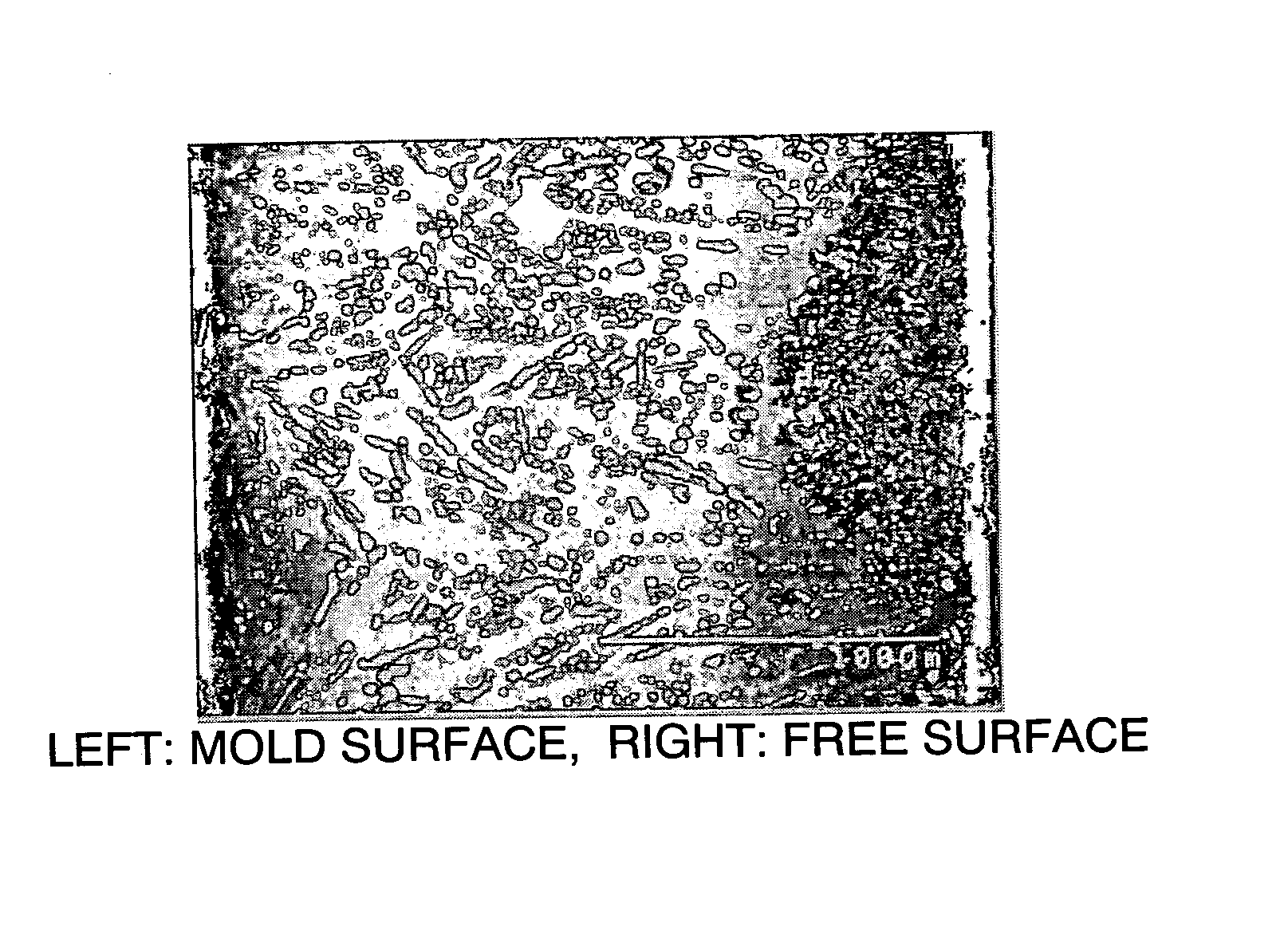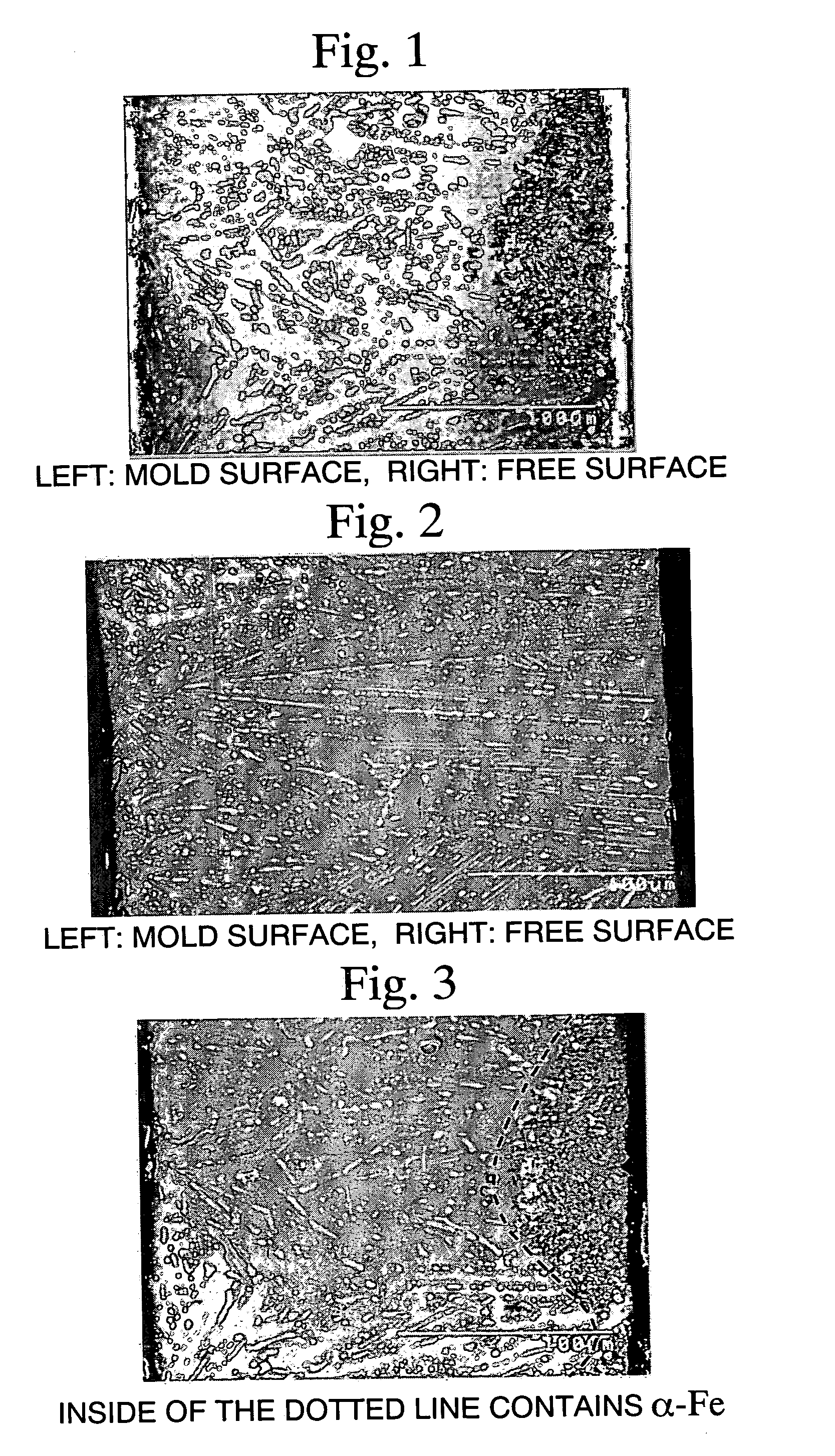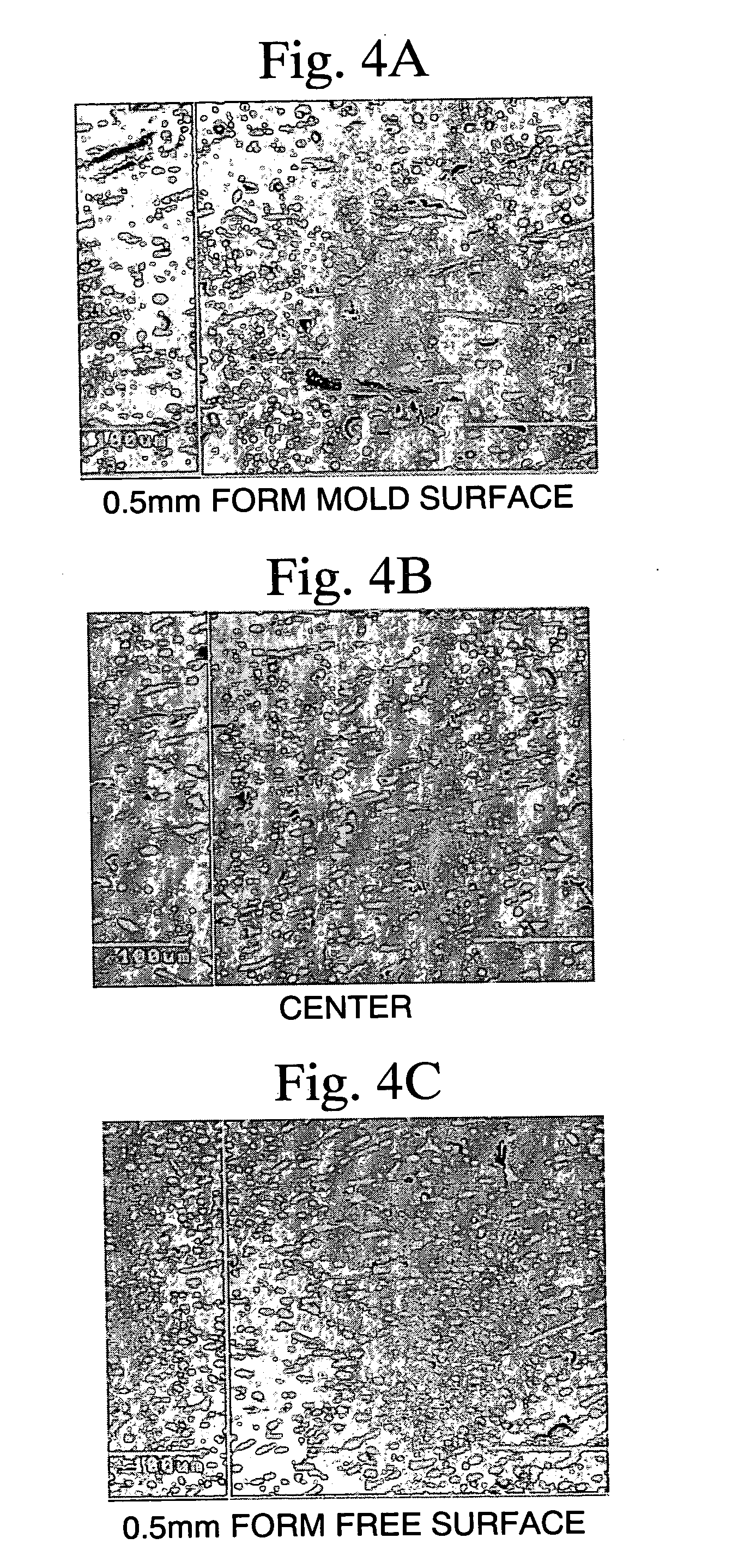Alloy flake for rare earth magnet, production method thereof, alloy powder for rare earth intered magnet, rare earth sintered magnet, alloy powder for bonded magnet and bonded magnet
- Summary
- Abstract
- Description
- Claims
- Application Information
AI Technical Summary
Benefits of technology
Problems solved by technology
Method used
Image
Examples
example 11
[0153] Neodymium, praseodymium, ferroboron, aluminum, and iron were mixed to thereby obtain the following alloy composition: TRE: 28.5% by mass (Nd: Pr=1:1 (in R)); B: 1.00% by mass; Al: 0.30% by mass; and a balance of iron. The resulting mixture was melted in an alumina crucible in an argon gas atmosphere (1 atm) by use of a high-frequency induction melting furnace. The resulting molten alloy was cast through strip casting, to thereby prepare alloy flakes.
[0154] The roller for casting having a diameter of 300 mm and made of pure copper was employed. During casting, the inside of the copper roller was cooled by water. The roller had a cast surface roughness, as represented by 10-point average roughness (Rz), of 20 μm and was rotated at a peripheral velocity of 0.9 m / s, to thereby produce alloy flakes having a mean thickness of 0.26 mm.
[0155] The thus-produced alloy flakes were found to have a surface (mold side) roughness, as represented by 10-point average roughness (Rz), of 9 μm...
example 12
[0156] An alloy having a composition similar to that of the alloy of Example 11 was melted in an alumina crucible in an argon gas atmosphere by use of a high-frequency induction melting furnace. The resulting molten alloy was cast by use of a centrifugal casting apparatus including a rotatable tundish.
[0157] During casting, the molten alloy was deposited on the inner wall of the mold at an average deposition rate of 0.01 cm / s. The rotation rate of the mold was modified such that centrifugal force is adjusted to 3 G. Centrifugal force (about 20 G) was applied to the molten alloy contained in the rotatable tundish, to thereby sprinkle the molten alloy.
[0158] The thus-produced alloy flakes were found to have a thickness of 7 to 10 mm. From each alloy flake, each sample cut at levels in the thickness direction of 7 mm, 8.5 mm, and 10 mm was polished in a fixed state. Each flake was observed under a scanning electron microscope (SEM) and a back-scattered electron image (BEI) was captur...
example 13
[0162] The flakes of the main phase alloy produced in Example 11 were subjected to hydrogen decrepitation. Hydrogen absorption step—the step preceding hydrogen decrepitation—was performed under the conditions: 100% hydrogen atmosphere, 2 atm, and retention time of 1 hour. The temperature of the alloy flakes at the start of hydrogen absorption reaction was 25° C. Hydrogen desorption step—subsequent step—was performed under the conditions: vacuum of 0.133 hPa, 500° C., and retention time of 1 hour. To the powder produced through hydrogen decrepitation, zinc stearate powder was added in an amount of 0.07% by mass. The mixture was sufficiently mixed in a 100% nitrogen atmosphere by use of a V-blender, and then micro-pulverized by use of a jet mill in a nitrogen atmosphere incorporated with oxygen (4,000 ppm). The resultant powder was sufficiently mixed again in a 100% nitrogen atmosphere by use of a V-blender. The obtained powder was found to have an oxygen concentration of 1,800 ppm. T...
PUM
| Property | Measurement | Unit |
|---|---|---|
| Length | aaaaa | aaaaa |
| Length | aaaaa | aaaaa |
| Length | aaaaa | aaaaa |
Abstract
Description
Claims
Application Information
 Login to View More
Login to View More - R&D
- Intellectual Property
- Life Sciences
- Materials
- Tech Scout
- Unparalleled Data Quality
- Higher Quality Content
- 60% Fewer Hallucinations
Browse by: Latest US Patents, China's latest patents, Technical Efficacy Thesaurus, Application Domain, Technology Topic, Popular Technical Reports.
© 2025 PatSnap. All rights reserved.Legal|Privacy policy|Modern Slavery Act Transparency Statement|Sitemap|About US| Contact US: help@patsnap.com



